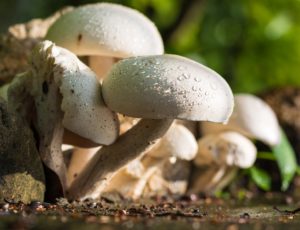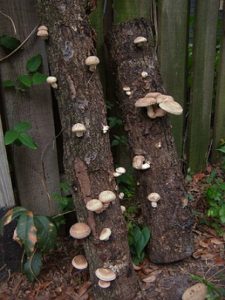 Mushrooms can be produced all year round and many popular varieties (such as button and portabella) can be harvested in only 6 weeks. Mushrooms have numerous health benefits, they boost the immune system and contain many essential nutrients including cyanocobalamin which is generally found in animal products.
Mushrooms can be produced all year round and many popular varieties (such as button and portabella) can be harvested in only 6 weeks. Mushrooms have numerous health benefits, they boost the immune system and contain many essential nutrients including cyanocobalamin which is generally found in animal products.
Oyster mushrooms are a popular and sustainable option as they can be grown on easily obtainable materials such as straw, sawdust, paper and cardboard. They can be grown in temperatures between 10-25 ° C making oyster mushrooms a good crop for the cooler seasons.
- Numerous health benefits.
- Can produce vitamin D from sunlight, like humans.
- Contain more amino acids than in corn, peanuts, or soy beans.
- Over 80 percent of all terrestrial plants have a mycorrhizal relationship with a fungal species. (Symbiosis)
- They create their own antibiotics for defence.
- Mycelium can use toxic substances such as oil and e-coli bacteria as a food source.
- Mushrooms are composed of 85-95 % water.
The body of the mushroom stores nutrients and other essential compounds, and when enough material is stored and the conditions are right they start to fruit – produce mushrooms. It is a hidden kingdom. The part of the fungus that we see is only the “fruit” of the organism. The living body of the fungus is a mycelium made out of a web of tiny filaments called hyphae. The mycelium is usually hidden in the soil, in wood, or another food source. A mycelium may fill a single ant, or cover many acres. The branching hyphae can add over a half mile (1 km) of total length to the mycelium each day. These webs live unseen until they develop mushrooms, puffballs, truffles, brackets, cups, “birds nests,” “corals” or other fruiting bodies. If the mycelium produces microscopic fruiting bodies, people may never notice the fungus. – Gmushrooms.com
Growing mushrooms on logs
Growing mushrooms naturally on decaying wood is an excellent option, and works for many popular and expensive types of mushroom, such as Shitake.
Mushroom logs to take a month of two longer to produce a harvest, but this drawback is far outweighed by the benefits.
- Each log can keep producing for up to 4 years.
- Completely natural and organic.
- No chemicals or artificial conditions are required.
- When a log has completed its producing life-cycle it can be treated and reused as a mushroom log or else used for Hugelkulture.
Preparing a log for planting is simple. Small holes are drilled into the log, spread evenly across the surface. Mushroom spores are then placed into the holes, and sealed in with wax or some other non-toxic sealant – this protects the spores until they become established.
Place the log in a moist and shady environment, or create such an environment, and enjoy your mushrooms!
Mushrooms have no skin so they can lose water to the atmosphere very easily. That is why they grow in high humidity (lots of water vapor in the air) conditions. If the humidity is too low the cells lose water faster than it can be “pumped” in and the immature mushroom dries up and dies. However, if it is too wet – the humidity is too high – the excess water prevents any gas exchange and the developing mushroom chokes off.
Mushrooms are fungi, and are usually placed in a Kingdom of their own apart from plants and animals. Mushrooms contain no chlorophyll and most are considered saprophytes. That is, they obtain their nutrition from metabolizing non living organic matter. This means they break down and “eat” dead plants, like your compost pile does. – Gmushrooms.com
Learn More >>
Information about the health benefits of mushrooms and what is required to build a mushroom farm @ Survivopedia
The health benefits of mushrooms @ VegitarianNutrition.info
A video of a mushroom farm in action @ Youtube
The health benefits of mushrooms @ 100thmonkeymushrooms.com
Mushroom log DIY @ forestfungi.com
Shiitake Mushroom log DIY @ Milkwood.net
Simple, small ice-box Mushroom Log DIY @ Youtube (8:12).
A .PDF guide to outdoor Log Mushroom cultivation @ Gmushrooms.com

